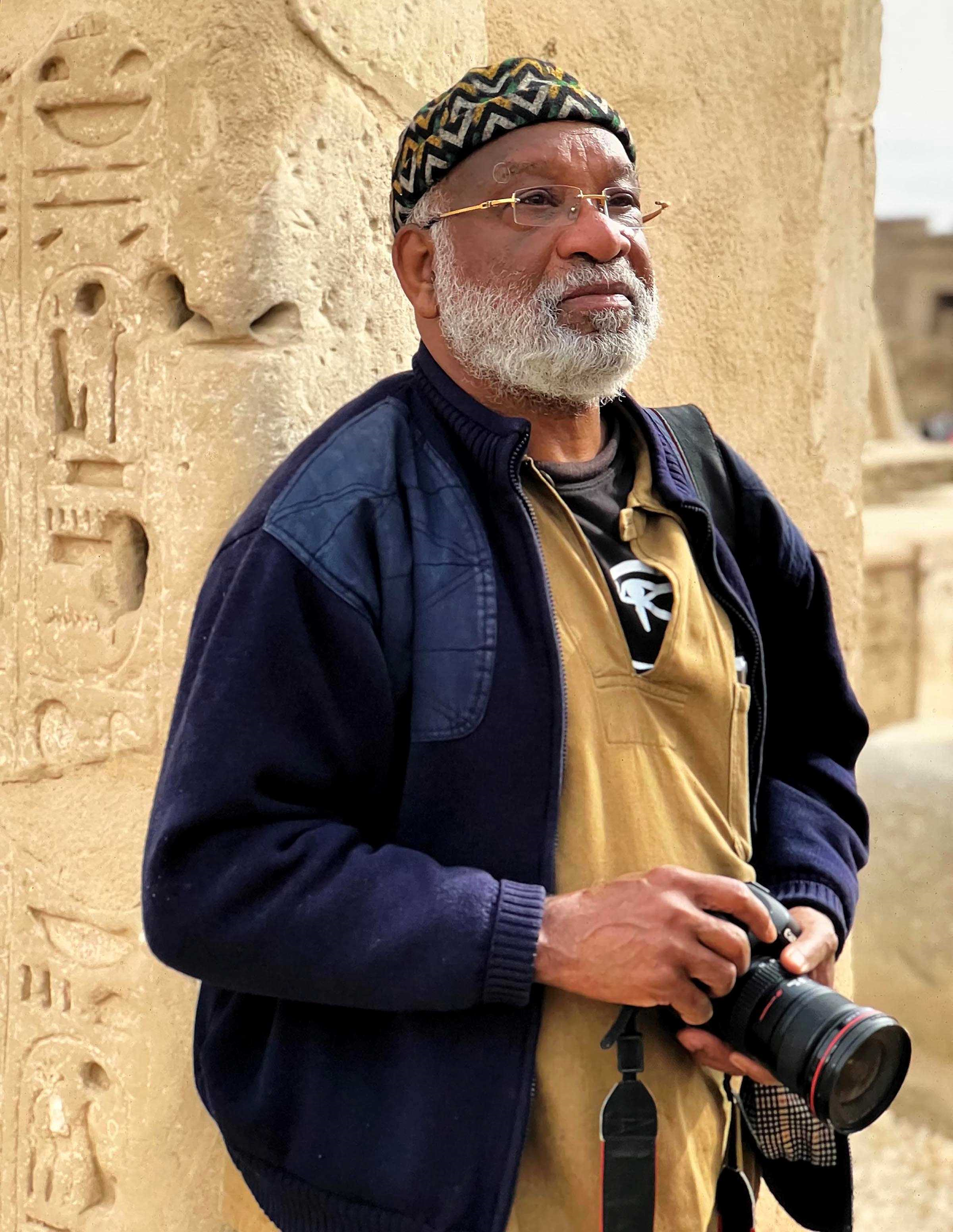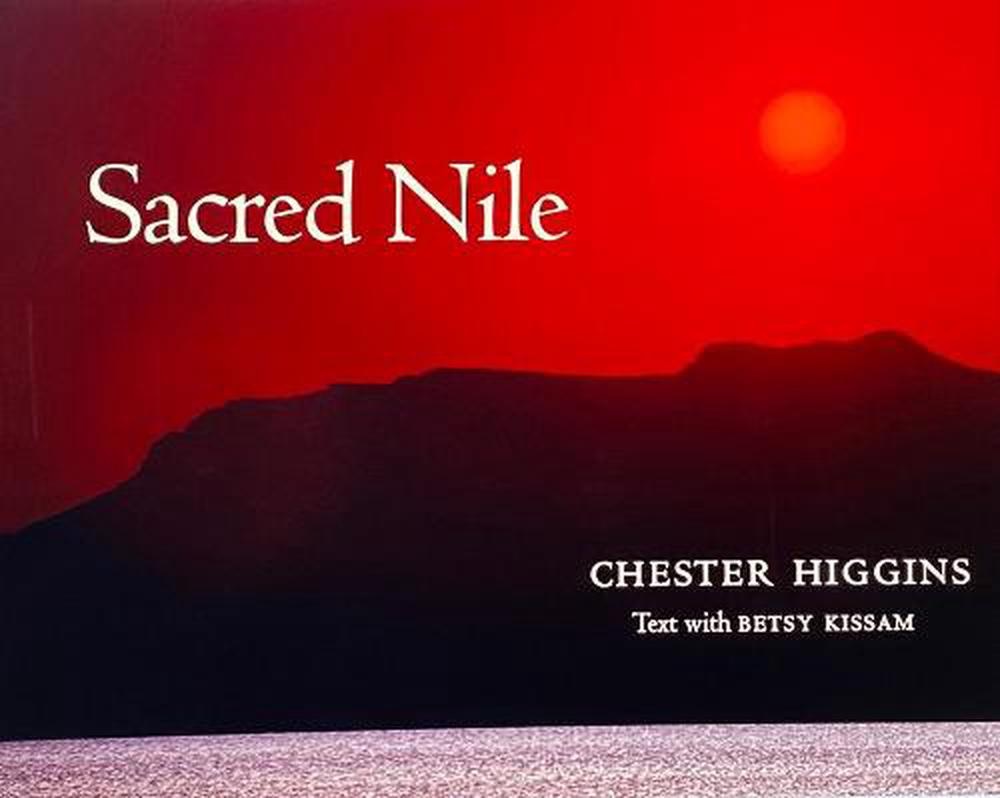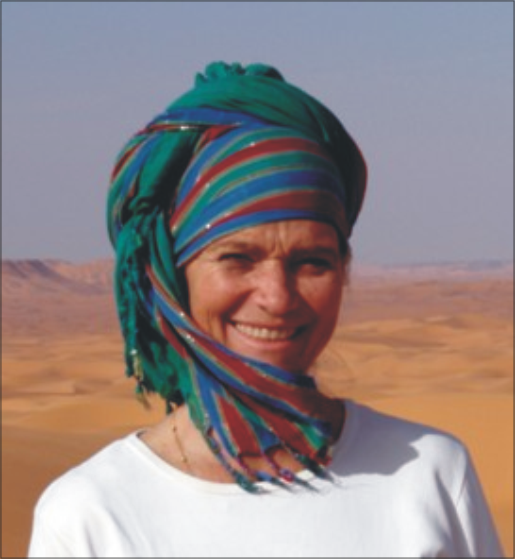
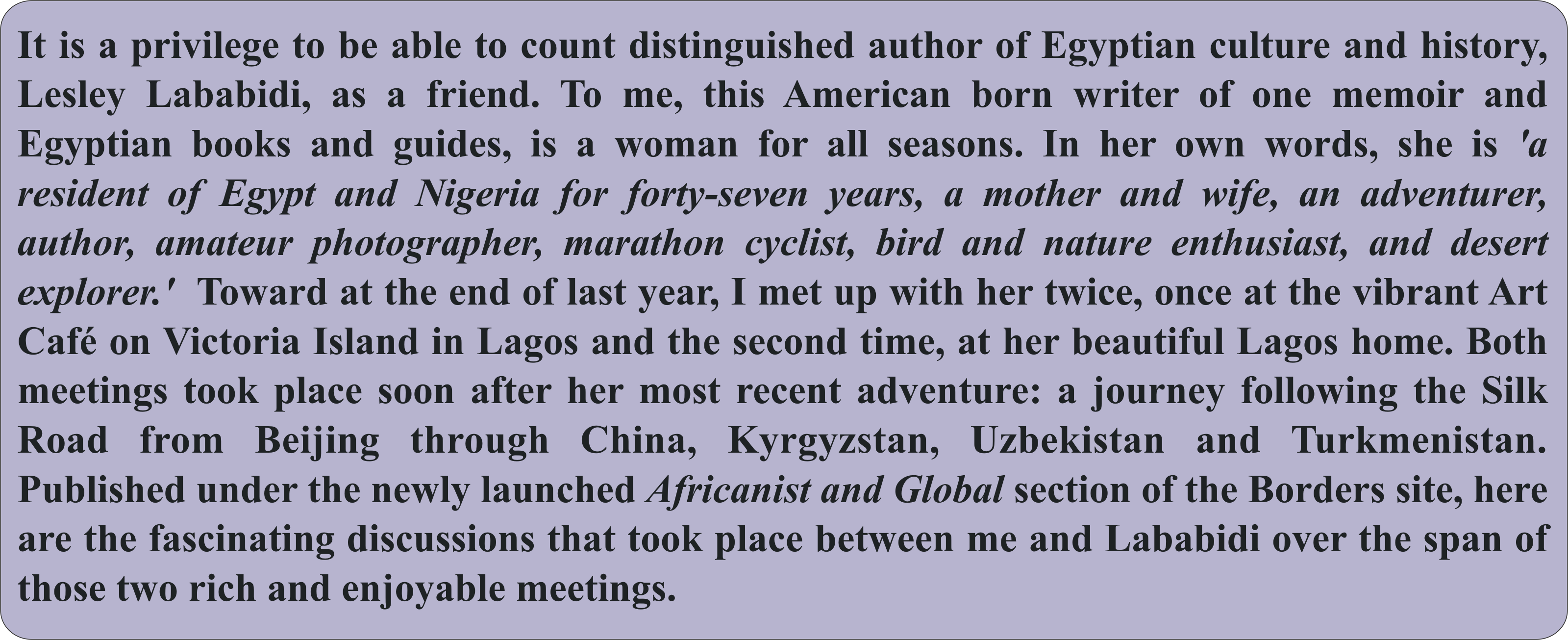

To introduce you in the standard way: When and where were you born? Where did you go to school? What did you study? - would be to miss the exciting road to Lesley Lababidi. My first question is therefore a quote, your own words taken from, Lesley Lababidi: A Collection of Works from Obelisque Magazine:
'The place you are from is not the place you belong; you belong where you believe you belong'. From the perspective of your family life spread across the United States, Egypt, Syria and Lebanon, please shed light on this quote.
When one chooses the path of living a multi-cultural, interracial and religious life in countries other than one's own, there is a choice one is faced with: Does one hold stanchly to the foundations of nation, state, traditions from which one came? Or does one adapt quickly to the most present circumstances, changing one's colours as a chameleon? Or is there room for fusion? For me, it is a corridor...up and down my corridor entering a door opening to ...Egypt, Lebanon, Nigeria, United States. I have found to live fully, in acceptance of the lifestyle, mores, traditions and beliefs of each particular place, it is best, for me, as I open the door marked any one of the four, that I leave the other three behind. I immerse myself, to the best of my ability, into that place, leaving the others in their rooms. This conscious decision, gives me a chance to fully observe, adapt and be accepted. It makes it less likely that I am judged and compared to the other. Resisting comparison, which can lead to dissatisfaction, is my major objective. I don't think that I am any happier or less happy than a person who was born and raised and died in the same town; acceptance of one's life, defines belonging.
Identity is a tricky thing, Amin Maalouf says in his book, On Identity, "Identity isn't given once and for all: it is built up and changes throughout a person's lifetime." Some people come into a country head-first and others arrive in a country, feet-first. The first being born into; and the second, choosing to step into another lifestyle.

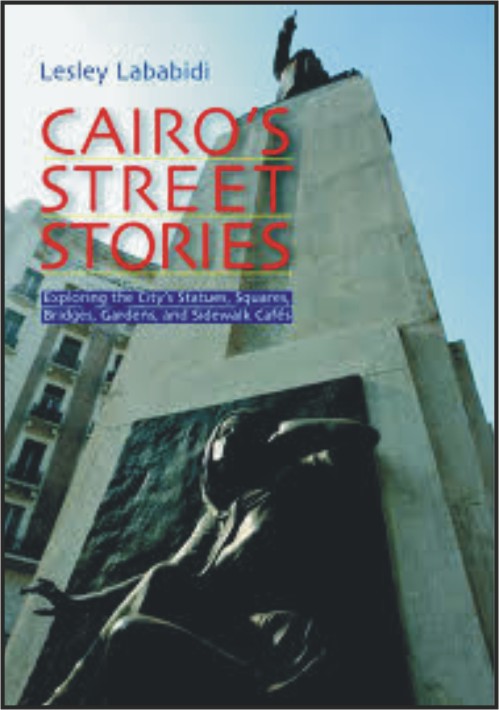
I discovered your work through your wonderful Cairo's Street's Stories which I have reviewed here on Borders. I was fascinated by the cultural approach to the history of Egypt.
'Architecture cannot speak' are the words of colleagues which you quote in an essay of the Obelisque Magazine collection.
From the perspective of a author of Egyptian culture and history, talk to us about 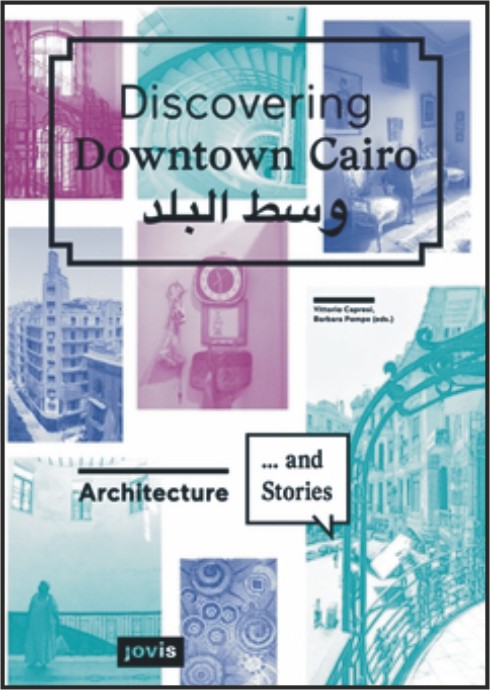 mute architecture.
mute architecture.
First of all, it is with deep gratitude and honour, Olatoun, to have had Cairo Street Stories reviewed by you for Borders. Your review revitalized interest and book sales!
"Architecture cannot speak," is a quote the book I reviewed, Discovering Downtown Cairo and is meant to be taken literally. Of course the building cannot, itself, speak; architecture is an object, an art form developed by a person with social and political philosophies. The authors of this book devised an interactive approach to collect narratives of inhabitants of specific buildings in Cairo that provided the viewer a language for the architecture.
The notion that architecture is a language has been debated since ancient times. Architecture sets certain elements that give context and relates basic notions of functions symbolised in ideas and objectives of the environment. The point is that the on-looker interprets the ideas of the architect, the era, the usage, and thus there is a message or an interpretation. Design in architecture is a signature of the architect, a visual impact with a persona, the speaking or interpretation comes from the on-looker.

Your journey as a cultural historian has seen you in myriad encounters. To mention a few: your meeting with the French/Egyptian artist Katherine Tisne; your visit to Siwa, the desert oasis which you have written poetically about; and the Uwaynat Mountains, site of rock paintings which I see from your photographs are truly amazing. And of course in Nigeria, you have witnessed the annual Durbar in North-western Nigeria and the glass-blowers of Kano State.
Share with us up to three African encounters of any kind which have held the greatest personal resonance for you.

A most memorable African encounter must be a two week trip through Mali by jeep which I took in 1989 with my two children. At the time they were thirteen and ten. It was my first Saharan experience that began in Bamako to Mopti, Timbuktu, and Gao and over the border into Niger. One day after a full day's drive on sandy piste, we arrived in the dusty village of Gao under a Harmattan laden sky. Upon entering the dimly lit L'Atlantide Hotel, candles were being prepared for the electricity-less night. A chill started to settle and my children were hungry and tired. Surveying the reception, I saw from of my eye, a man and a woman sitting against a mud-brick wall. Their heads were close to the other; their eyes drank one another's every word. I could not stop staring. I tried to pry my gaze away but I was struck with emotion by the simple yet deeply complex beauty. The man whose dark skin was almost blue, wearing flowing white robes and turban, held a woman whose whiteness shone through her transparent, scant dress, her straight red hair aflame in his hands.
Another unforgettable African moment was in 1999 at the commissioning of the
.png)
new Ibadan publishing house belonging to Spectrum Books which published my memoirs, Paddle Your Own Canoe. I was invited along with several other authors. Ibadan is a 2-hour drive from Lagos, all on a 4 lane highway and a few police checks but everyone had a wonderful smile to share with us. Dr. Rowland Aderemi Adeleye* accompanied me which was a great honour as not only was he a dear and close friend but he also wrote the foreword of my book. Chief Joop Berkhout, founder of Spectrum Publishing (1978), greeted us warmly. There were many dignitaries in attendance. General Yakubu Gowon the former Head of State, Chief Ernest Shonekan also a Former Head of State, Oba Okunade Sijuade Olubuse, The Ooni and Oluaye of Ife and Chief Emeka Ojukwu. Besides being an opportunity to promote the 5 new books Spectrum had just published, which included mine, an amazing event occurred which was totally unexpected: General Gowon who led the 3-year civil war for the Federal side and who had stopped Colonel Ojukwu from carving out a Biafra Republic, shook hands and humorously teased one another about their past roles! After the fall of Biafra, Chief Ojukwu went into exile in the Cote d'Ivoire. At the opening, General Gowon and Chief Ojukwu actually embraced one another. It was generally believed to have been only their second meeting since the civil war. The crowd was delighted!
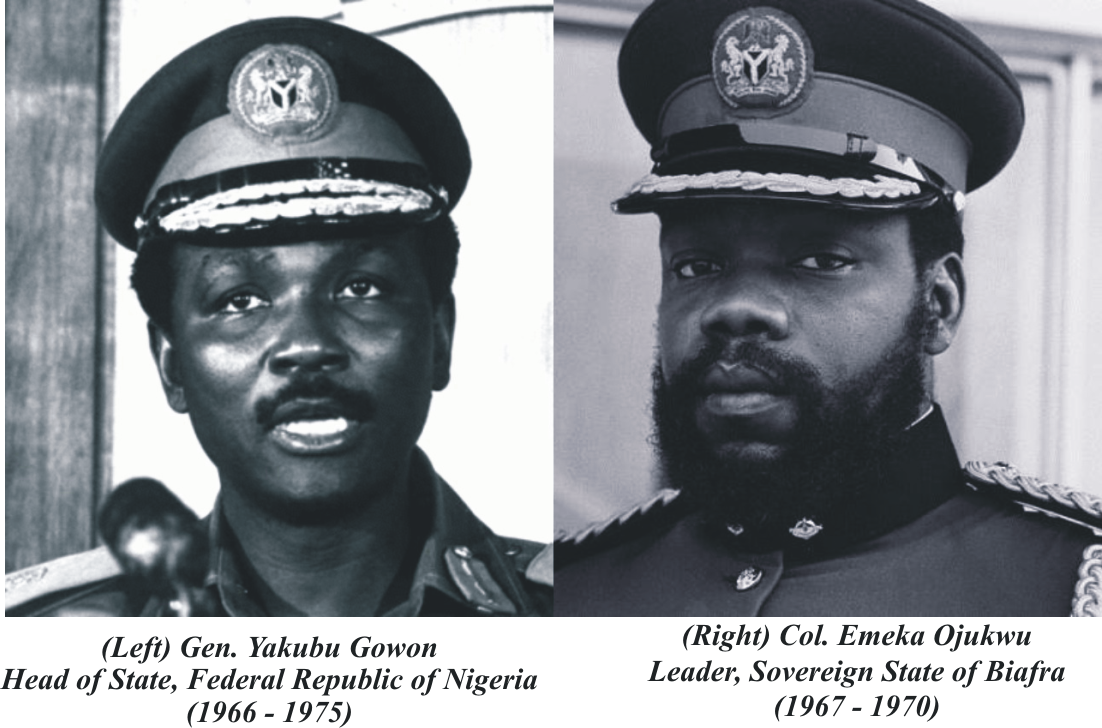
It was an exhilarating moment to meet General Gowon as he was the Head of State when we were struggling in the 70s to get my husband, Maan's business going. I was more than surprised at how humble and personable he was. I felt I knew him and when he spoke to me, it was as if I was a friend. At one point in the festivities we were all invited to dance and as I shuffled my feet, General Gowon swayed forward and asked me how long I had live in Nigeria. Upon my response, he said,
"You must have been a baby when you came!" Yes, that was just the right flattery!
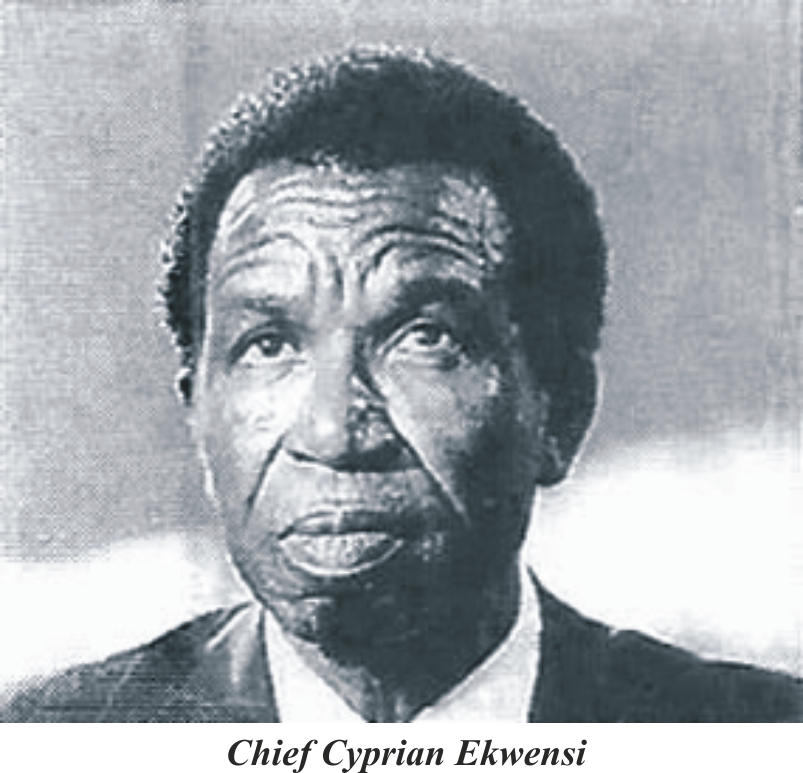
Another exceedingly wonderful surprise gift I received from the event was that I met Chief Cyprian Ekwensi, the famous Nigerian author. I had the pleasure of sitting next to him during lunch and after the event, he graciously sent three of his books to me, signed. He has written 26 books about different aspects of Nigerian life and was a very prominent writer for Drum Magazine from 1950-70. Two movies have been made from his novels and yet he was a humble man, full of wonderful stories and of course a wealth of information on Nigeria and Nigerians. We kept in contact until his death in 2007.
* Dr. Adeleye is the author of Power and Diplomacy in Northern Nigeria: 1804-1906, the Sokoto Caliphate and its Enemies
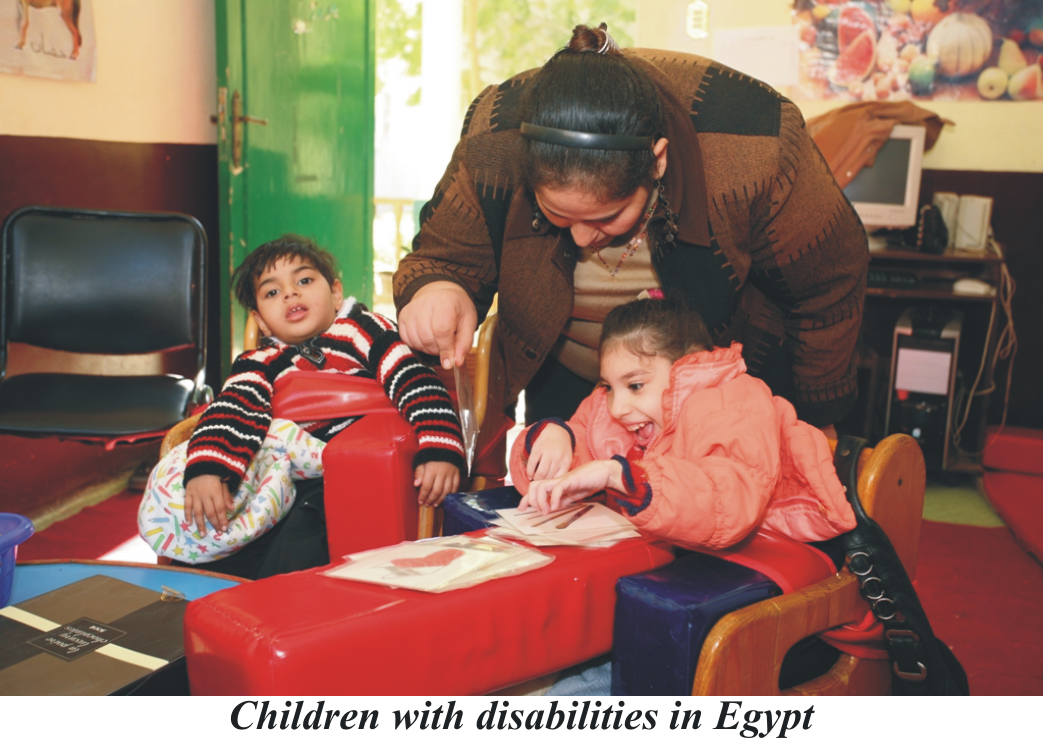 Having coordinated a children's charity here in Nigeria for 14 years now, I was thrilled to see that you also engage with the rights of children and that you have written a passionate and eloquent book, Silent No More, which charts developments in Egypt's care provision for children with Special Needs.
Are children with disabilities in Egypt as invisible as they are over here in Nigeria? Share the key aspects of your research and findings with us regarding the delivery of care to children with Special Needs in Egypt.
Having coordinated a children's charity here in Nigeria for 14 years now, I was thrilled to see that you also engage with the rights of children and that you have written a passionate and eloquent book, Silent No More, which charts developments in Egypt's care provision for children with Special Needs.
Are children with disabilities in Egypt as invisible as they are over here in Nigeria? Share the key aspects of your research and findings with us regarding the delivery of care to children with Special Needs in Egypt.
At the time Silent No More was published in 2002, there was an emerging interest through public education to bringing special needs people into public life and the stigma attached to families of special needs children declined. Public access ramps to building, sidewalks and stairs began to appear; newspapers carried stories of disabled; new groups and institutions were opened. There was a beginning of enlightenment and acceptance. My book charted the progress Egypt had made in the field of special needs, as told primarily by the people actually involved. The introductory chapter tells of Egypt's historical role in caring for disabled from the middle Ages to the present day and continues with a survey of governmental and non-governmental organizations and activities dedicated to lives of special needs people. Extensive interviews were conducted by letting the disabled and their families; teachers and therapists; directors of government schools and leaders in nongovernmental organizations speak for themselves. Their stories tell alternately of frustration, commitment, anger, progress, and courage. Most importantly, each person has a message that speaks to the future and to the challenges that Egyptians face.

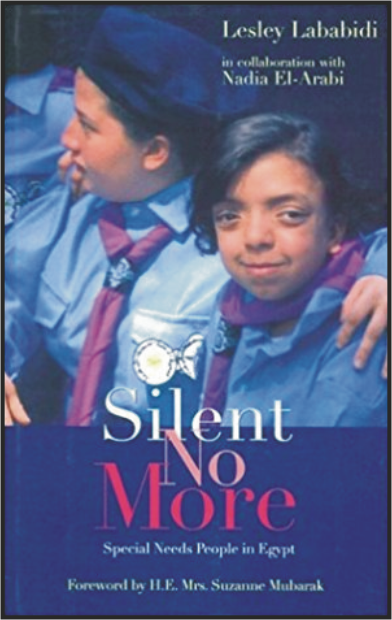
Silent No More was published in 2002 by American University in Cairo Press with a Foreword provided by Mrs. Suzanne Mubarak, the wife of the deposed Egyptian President, Hosni Mubarak (1981 - 2011).
I was surprised by her involvement. Am I right to have been? Talk to us about Suzanne Mubarak's involvement with your Special Needs People project. And post-Arab Spring, what do Hosni and Suzanne Mubarak represent to your family and to Egyptians in your demographic group?
Suzanne Mubarak, wife of the deposed Egyptian president, Hosni Mubarak, must be given credit for championing Special Needs people and children and women during her husband's regime. Mrs. Mubarak gave her attention to projects, education, training and development in rights related areas and mobilized communities to continue building better schools and other relevant institutions. She also fought for laws to give women the right to pass their citizenship to their children and the right to divorce. In my humble opinion, one of the tragedies of the revolution was the loss of Suzanne Mubarak and her warrior attitude to improving the life of children, women, education, and human rights.

On my visits to your home in Apapa, Lagos, I like to stop to admire the photographs on the walls, of you and your husband, Maan Lababidi. In many of them you are both in Yoruba attire attending various functions as Yoruba chieftains.
Talk to us about being Otun Yeye Luwa, the chieftancy title conferred on you by His Royal Highness, Alayeluwa Oba Adeyinka Oyekan II, Oba(King) of Lagos.
What does it mean to you?
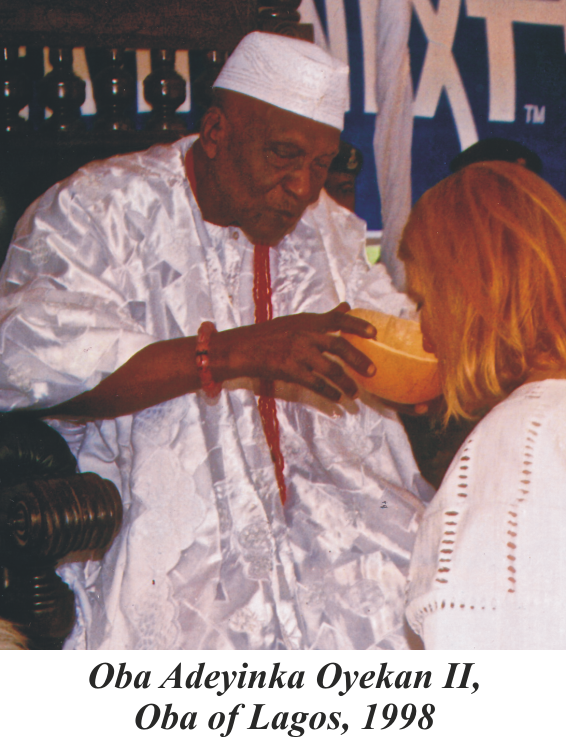
The Olori Abioye Oyekan, a wife of the Oba of Lagos, came to visit me in Apapa. She presented me with a letter. When I opened it, I recognized the insignia to be that of the His Royal Highness, Oba Adeyinka Oyekan II, Oba of Lagos. The Oba had decided to confer upon me a female chieftaincy title. I was so totally shocked I couldn't say anything. I did not feel I deserved it and wanted to decline but I knew that would be a terrible insult. After several minutes of reading the Oba's words over and checking to make sure of the heading and signature, I accepted with tremendous happiness and disbelief.
We set a date to visit the Oba in the Palace to accept his generosity that would bring me into his culture. Oba requested that we begin immediately with the first of the two-part ceremony which upon completion recognizes me as a chief. The Iwuye ceremony was celebrated on June 27, 1999, which is the public celebration of the title.
The first part of the ceremony was performed within the palace shrine. The Olori Abioye Oyekan made a long list of the many native items that would be needed. The list looked something like this, kola nuts, bitter kola,1 giant snail, 3 roosters, 1 dove, 1 white ram, schnapps which was for the ceremony itself. Then there were the normal gifts of wine and whiskey that must be sent before the induction. On Saturday afternoon of April 11th at 5pm we drove into the courtyard of the Oba's Palace, the Iga Iduganran, past four black canons which were installed in 1814 and 1913 respectively for the protection of the Oba and his family. Although long out of use, they are now historical relics.
We were escorted into the Oba's large reception room. The overhanging roofs provide a space for the Oba's drummers that announce the coming and goings of the Oba, chiefs, and important people. The drummers with gbedu drums, kettle like and beaten with a stick, and hour glass tension drum, dundun, that make sounds of the highly tonal Yoruba language when played position themselves next to the doorway. Along with the old mothers who sat in a line along a side wall with their Igbe drums which are beaten with bare hands. Men shook oversized calabash strung with shells to make a clattering and scratching beat. The long iron bells intersperse a hint of lightness through the deep heavy beat.
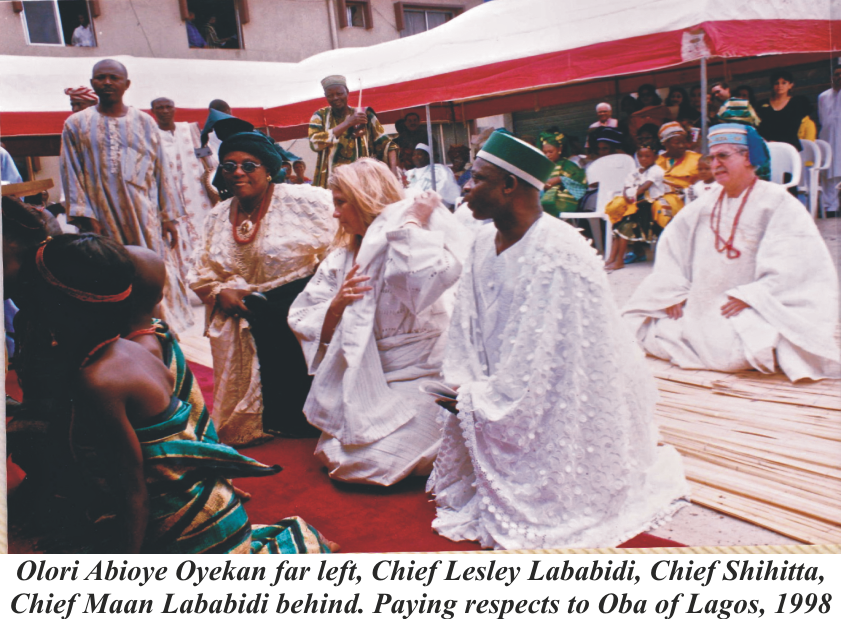
We waited for people to gather and anticipation grew as a crowd pushed to see who was being brought into the society. Each time the drums beat to a new height of vibration we looked to see who was entering the door and soon the long reception room began to fill. Only the three enormous thrones remained empty at the end of the room and we waited for the Oba of Lagos and his entourage. When the Oba did join us, his chiefs prostrated on the floor three times, fingers are snapped and the Oba is addressed in the highly respectful and endearing tittle of
"Kabiyesi". The women kneel and all show their respect and admiration for the Oba of Lagos. As each chief expressed his loyalty for the Oba, the Oba listened intently to all that was said. I watched his face and although he speaks little his face is kind and his eyes are warm. He does not need to move to be understood, the people around him seem to know what he wishes almost before he makes a motion or lift hand.
After the formalities of welcoming and showing respect had ended, the Oba stood and all the chiefs, priests and important men were told to follow the Oba into the inner chambers which are considered sacred. The highest chief stopped in front of me and asked, "Do you want a Christian, Islamic or African ceremony?"
Without hesitation, I said, "African!"
The Yoruba people cherish their culture and they do everything possible to promote it. They respect their Kabiyesi who represents the gods on earth and is considered divine. They respect and have reverence for the ritual and sacred palaces that embody the preservation as well as promotion of the culture. No words can describe the regard I have for the people of Nigeria and today I am a little bit closer to their world.

You wrote a brilliantly titled piece for Valerie Magazine: Global News for Women by Women in February 2014. The title is: Tearing at the Fabric: Peju Alatise, Nigeria's Art Activist.
Peju Alatise is my favourite female visual artist and I submit, a work of art in her own right!
Tell us about the article you wrote about her and its main thrust.
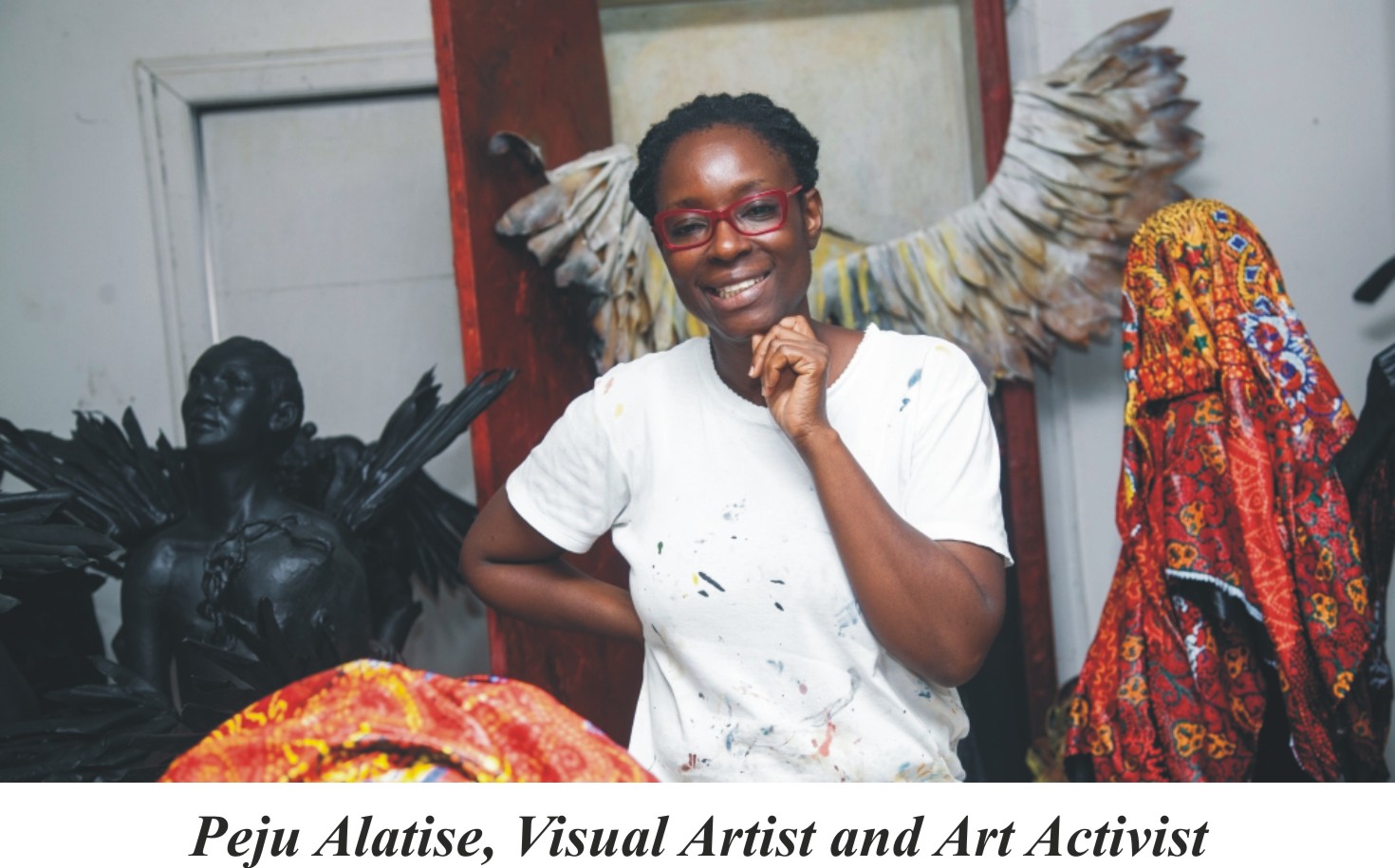
I was immediately drawn to Peju by her low, melodious voice. As I got to know Peju we discovered we had more in common than on first introduction. Peju is the same age as my eldest son, Omar. Both Peju and Omar were brought up in Apapa and may have gone to the same pre-school. An even stronger connection was revealed when Peju visited me in Apapa and saw the cover of Paddle Your Own Canoe. She was astounded and asked about the photograph. I explained that my daughter, Saadiah, had taken it of a woman and her child paddling up the creek one Sunday afternoon. Peju said she saw the picture in the newspaper for an exhibition at the Lagos National Museum in 1996. I explained that exhibition was my daughter's. Peju was silent for some time and then, in her beautiful voice, she told me that at that time she had been studying architecture and that when she saw the photograph she drew it and it became her first drawing. So, it is one of those things that happen along the path only to have its meaning revealed in the future.
Cloth, woven, embroidered, dyed, designed, convey a message. Much has been written about the unconscious signals people send out about themselves by the way they dress. A whole customary language exists for conveying information about a person's situation with a community, their status, their occupation and religious affiliations. Peju's art expresses this language through clothes as a symbol of societal issues and emotions.
You have had extensive experience writing for American University in Cairo Press (AUC). You have also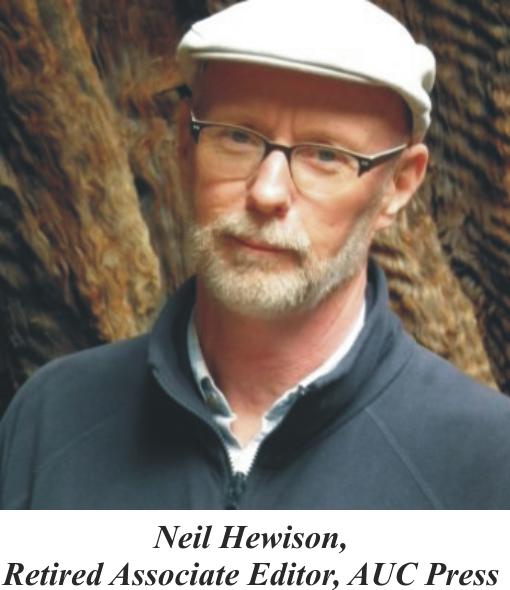 experienced writing for what was once the premier publishing firm in Nigeria. Spectrum Books published your Nigeria memoirs, Paddle Your Own Canoe: An American Woman's Passage into Nigeria. How do your experiences with the two publishing houses compare and contrast?
Are there pearls of publishing wisdom gleaned from outgoing Associate Editor, the phenomenal Neil Hewison which you would like to pass on to emerging publishers in Nigeria?
experienced writing for what was once the premier publishing firm in Nigeria. Spectrum Books published your Nigeria memoirs, Paddle Your Own Canoe: An American Woman's Passage into Nigeria. How do your experiences with the two publishing houses compare and contrast?
Are there pearls of publishing wisdom gleaned from outgoing Associate Editor, the phenomenal Neil Hewison which you would like to pass on to emerging publishers in Nigeria?
The two publishing house are intertwined for me. When I was looking for a publisher for Paddle Your Own Canoe in 1995, I contacted American University Press in Cairo (AUC). The director, Marc Linz, read the manuscript and suggested I submit the manuscript to Spectrum Publishers in Ibadan and put me in touch with Chief Joop Berkhout. When the book was published, I gave Marc Linz a copy. Several years later my book proposal, Cairo The Family Guide, was accepted at AUC Press.
I can't speak on behalf of publishing houses but what I learned from Neil Hewison is that a great editor makes the manuscript better and that an author trusts the process...all queries are for the best.
Finally, you have only recently returned from outside Africa, by which I mean your China and Central Asian journey - the famous Silk Road. I followed your travels via your blog Nomad4Now and quite simply feasted on the photos you shared of beautiful people, gorgeous art and breath-taking landscapes.
Share some of the highlights and unforgettable moments with us, from your two month sojourn in the Far East.
Two months of travel through the entire length of China and through Central Asia following the ancient Silk Road by train consisted of daily unforgettable memories. The classical Chinese and Tibetan operas still echoe in my ears, the many talented artisans who work diligently to preserve traditional crafts, the mountain scenery of Kyrgyzstan and the Nukus Karakalpakstan Art Museum that houses 82,000 pieces Russian, Uzbek, and Karakalpak avant-garde paintings from 1920-30s are but a few of the highlights. I entered China with a preconceived idea of what I would find and discovered a power-nation and I was constantly impressed with their superior systems of transportation, signage in English and Chinese, and the availability of clean public toilets. In Central Asia, the religion, Zoroastrianism, the Sogdians- an ancient Iranian civilization- and the territorial evolution of Russia over 50-years of Russian, gave me many, many hours of contemplation and study. I approached this journey as a traveller rather than a tourist and what I learned was that I must continue to explore and question and be grateful, always grateful.
Click Here to get a copy
Thank you Olatoun!
UPDATE
Since
this interview, in recognition of her important work documenting the history
and craft of glass making in Bida, Niger State, Nigeria. Lesley Lababidi, has been officially turbaned. The ceremony held on 17th November 2019 and was led by the
Etsu Nupe of the Council of Traditional Rulers.
A prolific author of American University Press, AUC Press has written a feature article about Lababidi's prestigious award here:
https://aucpress.com/auc-press-blog/lesley-lababidi-presented-with-rare-nupe-award/
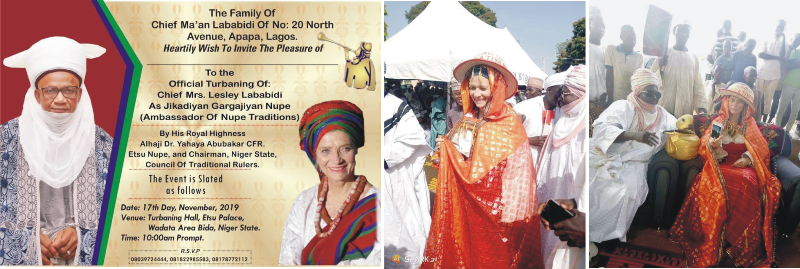
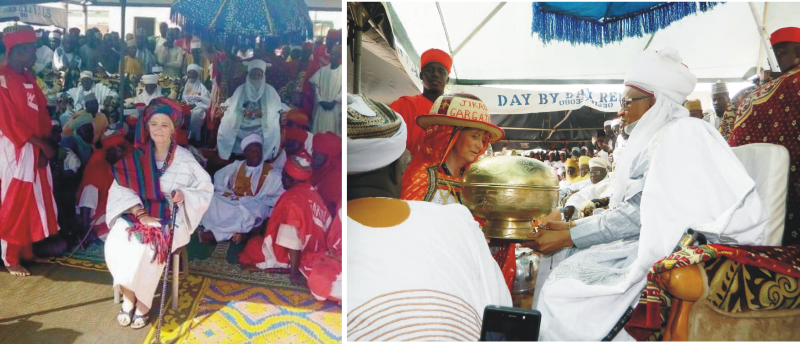
I recently had the privilege to watch The Lost Legacy of Bida Bikini , the riveting documentary commissioned by Lesley Lababidi and produced in 2021 by Singing Tree Films. The documentary represents the fulcrum and delicious fruit of regular research-focused travel to Niger State in the North of Nigeria and into Bida, a village-town bordered by walls of rich red earth.
In The Red Walls of Bida: Glass Bangles, the booklet produced some time before the film was made, Lababidi explains that like the other traditional industries of Bida such as blacksmithing, aluminium and silversmithing, weaving and beadwork, glassmaking is largely hereditary and a guild-organized craft. Its traditions like that of the others crafts, reflect a cross-fertilization of influences originating in hundreds of years of integration between the Bida people of Nupe descent, the southern Yorubas, the Northern Hausa and the Fulani tribes.
And now, we have the film. This is what she has said about making the visually rich, well-narrated and important documentary:
“It is almost a miracle to get this out to the public and now, the British Museum will have it available in perpetuity. It is a blessing. Ultimately, the Etsu Nupe [HRH, Alhaji Yahaya Abubakar] was the key to everything. He is a great believer in the preservation of heritage and under his umbrella, people pulled together to make this documentary happen.â€
The Lost Legacy of Bida Bikini
Watch the film here:
https://drs.britishmuseum.org/articles/media/Lost_legacy_of_Bida_Bikini/14535420
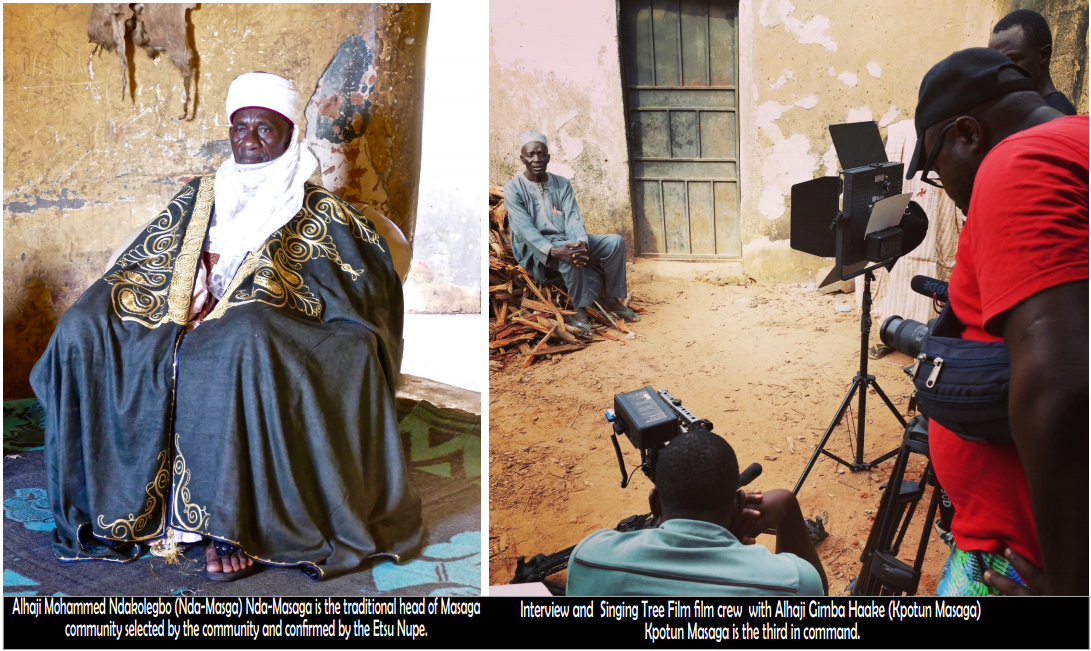
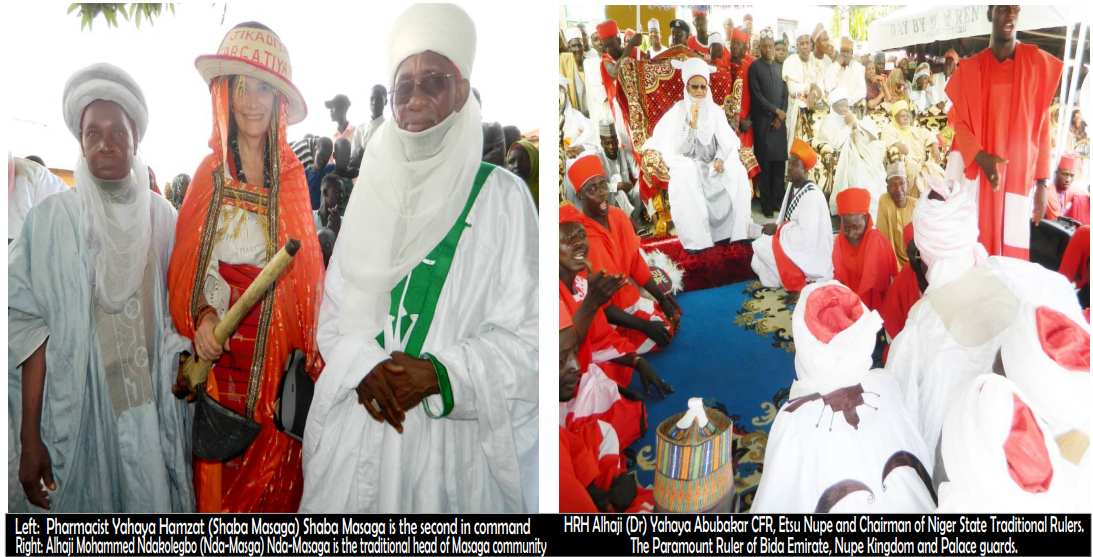


BIDA, NIGER STATE, NIGERIA - UNESCO WORLD
CREATIVE CITY
LESLEY LABABIDI’S LEGACY
The Lost Legacy of Bida Bikini is on permanent
display on the British Museum website: https://drs.britishmuseum.org/articles/media/Lost_legacy_of_Bida_Bikini/14535420
For turning the floodlight on the artisanal
culture of Bida, in 2019, Alhaji Dr. Yahaya Abubakar CFR, the Etsu Nupe,
traditional ruler of Bida, conferred on Lesley Lababidi the title of Jikadiyan
Gargajiyan Nupe (Ambassador of Nupe Traditions) on 17th November
2019 at an official turbaning ceremony witnessed by the community.
Earlier this year, in 2022, when UNESCO awarded
Bida City the status of one of the world’s creative cities, the Etsu called her
to express his gratitude for the immense contributions she has made towards
bringing the knowledge of the ancient and endangered glassmaking traditions of
Bida to the world.
In Lababidi’s words taken from her blog
Nomad4Now: https://nomad4now.com/2022/03/25/return-to-bida-2022/
“Seven years of
promoting heritage awareness and preservation in Nupeland includes articles,
booklets, programs, international exhibitions, Instagram @bida_glassmakers,
and the documentary [permanently displayed on the British Museum
website]. These efforts led to UNESCO designating Bida as the creative
city of crafts and folk art in Nigeria.â€
Read about the UNESCO
Creative Cities Network here: https://news.band/bida-city-declared-unesco-creative-cities-network-member-alongside-48-others/
Congratulations to the
glassmakers alive and deceased of Bida, to the people of Bida, to the Etsu Nupe
and to Lesley Lababidi, whose love and dedication made this deserved honour
happen.

Bida City declared UNESCO creative cities network member alongside 48 others – News Band
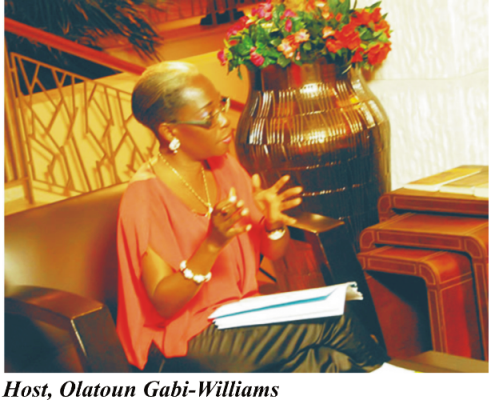




 mute architecture.
mute architecture.

 A most memorable African encounter must be a two week trip through Mali by jeep which I took in 1989 with my two children. At the time they were thirteen and ten. It was my first Saharan experience that began in Bamako to Mopti, Timbuktu, and Gao and over the border into Niger. One day after a full day's drive on sandy piste, we arrived in the dusty village of Gao under a Harmattan laden sky. Upon entering the dimly lit L'Atlantide Hotel, candles were being prepared for the electricity-less night. A chill started to settle and my children were hungry and tired. Surveying the reception, I saw from of my eye, a man and a woman sitting against a mud-brick wall. Their heads were close to the other; their eyes drank one another's every word. I could not stop staring. I tried to pry my gaze away but I was struck with emotion by the simple yet deeply complex beauty. The man whose dark skin was almost blue, wearing flowing white robes and turban, held a woman whose whiteness shone through her transparent, scant dress, her straight red hair aflame in his hands.
A most memorable African encounter must be a two week trip through Mali by jeep which I took in 1989 with my two children. At the time they were thirteen and ten. It was my first Saharan experience that began in Bamako to Mopti, Timbuktu, and Gao and over the border into Niger. One day after a full day's drive on sandy piste, we arrived in the dusty village of Gao under a Harmattan laden sky. Upon entering the dimly lit L'Atlantide Hotel, candles were being prepared for the electricity-less night. A chill started to settle and my children were hungry and tired. Surveying the reception, I saw from of my eye, a man and a woman sitting against a mud-brick wall. Their heads were close to the other; their eyes drank one another's every word. I could not stop staring. I tried to pry my gaze away but I was struck with emotion by the simple yet deeply complex beauty. The man whose dark skin was almost blue, wearing flowing white robes and turban, held a woman whose whiteness shone through her transparent, scant dress, her straight red hair aflame in his hands.
.png) new Ibadan publishing house belonging to Spectrum Books which published my memoirs, Paddle Your Own Canoe. I was invited along with several other authors. Ibadan is a 2-hour drive from Lagos, all on a 4 lane highway and a few police checks but everyone had a wonderful smile to share with us. Dr. Rowland Aderemi Adeleye* accompanied me which was a great honour as not only was he a dear and close friend but he also wrote the foreword of my book. Chief Joop Berkhout, founder of Spectrum Publishing (1978), greeted us warmly. There were many dignitaries in attendance. General Yakubu Gowon the former Head of State, Chief Ernest Shonekan also a Former Head of State, Oba Okunade Sijuade Olubuse, The Ooni and Oluaye of Ife and Chief Emeka Ojukwu. Besides being an opportunity to promote the 5 new books Spectrum had just published, which included mine, an amazing event occurred which was totally unexpected: General Gowon who led the 3-year civil war for the Federal side and who had stopped Colonel Ojukwu from carving out a Biafra Republic, shook hands and humorously teased one another about their past roles! After the fall of Biafra, Chief Ojukwu went into exile in the Cote d'Ivoire. At the opening, General Gowon and Chief Ojukwu actually embraced one another. It was generally believed to have been only their second meeting since the civil war. The crowd was delighted!
new Ibadan publishing house belonging to Spectrum Books which published my memoirs, Paddle Your Own Canoe. I was invited along with several other authors. Ibadan is a 2-hour drive from Lagos, all on a 4 lane highway and a few police checks but everyone had a wonderful smile to share with us. Dr. Rowland Aderemi Adeleye* accompanied me which was a great honour as not only was he a dear and close friend but he also wrote the foreword of my book. Chief Joop Berkhout, founder of Spectrum Publishing (1978), greeted us warmly. There were many dignitaries in attendance. General Yakubu Gowon the former Head of State, Chief Ernest Shonekan also a Former Head of State, Oba Okunade Sijuade Olubuse, The Ooni and Oluaye of Ife and Chief Emeka Ojukwu. Besides being an opportunity to promote the 5 new books Spectrum had just published, which included mine, an amazing event occurred which was totally unexpected: General Gowon who led the 3-year civil war for the Federal side and who had stopped Colonel Ojukwu from carving out a Biafra Republic, shook hands and humorously teased one another about their past roles! After the fall of Biafra, Chief Ojukwu went into exile in the Cote d'Ivoire. At the opening, General Gowon and Chief Ojukwu actually embraced one another. It was generally believed to have been only their second meeting since the civil war. The crowd was delighted!
 It was an exhilarating moment to meet General Gowon as he was the Head of State when we were struggling in the 70s to get my husband, Maan's business going. I was more than surprised at how humble and personable he was. I felt I knew him and when he spoke to me, it was as if I was a friend. At one point in the festivities we were all invited to dance and as I shuffled my feet, General Gowon swayed forward and asked me how long I had live in Nigeria. Upon my response, he said, "You must have been a baby when you came!" Yes, that was just the right flattery!
It was an exhilarating moment to meet General Gowon as he was the Head of State when we were struggling in the 70s to get my husband, Maan's business going. I was more than surprised at how humble and personable he was. I felt I knew him and when he spoke to me, it was as if I was a friend. At one point in the festivities we were all invited to dance and as I shuffled my feet, General Gowon swayed forward and asked me how long I had live in Nigeria. Upon my response, he said, "You must have been a baby when you came!" Yes, that was just the right flattery!


 Having coordinated a children's charity here in Nigeria for 14 years now, I was thrilled to see that you also engage with the rights of children and that you have written a passionate and eloquent book, Silent No More, which charts developments in Egypt's care provision for children with Special Needs.
Are children with disabilities in Egypt as invisible as they are over here in Nigeria? Share the key aspects of your research and findings with us regarding the delivery of care to children with Special Needs in Egypt.
Having coordinated a children's charity here in Nigeria for 14 years now, I was thrilled to see that you also engage with the rights of children and that you have written a passionate and eloquent book, Silent No More, which charts developments in Egypt's care provision for children with Special Needs.
Are children with disabilities in Egypt as invisible as they are over here in Nigeria? Share the key aspects of your research and findings with us regarding the delivery of care to children with Special Needs in Egypt.


 The Olori Abioye Oyekan, a wife of the Oba of Lagos, came to visit me in Apapa. She presented me with a letter. When I opened it, I recognized the insignia to be that of the His Royal Highness, Oba Adeyinka Oyekan II, Oba of Lagos. The Oba had decided to confer upon me a female chieftaincy title. I was so totally shocked I couldn't say anything. I did not feel I deserved it and wanted to decline but I knew that would be a terrible insult. After several minutes of reading the Oba's words over and checking to make sure of the heading and signature, I accepted with tremendous happiness and disbelief.
The Olori Abioye Oyekan, a wife of the Oba of Lagos, came to visit me in Apapa. She presented me with a letter. When I opened it, I recognized the insignia to be that of the His Royal Highness, Oba Adeyinka Oyekan II, Oba of Lagos. The Oba had decided to confer upon me a female chieftaincy title. I was so totally shocked I couldn't say anything. I did not feel I deserved it and wanted to decline but I knew that would be a terrible insult. After several minutes of reading the Oba's words over and checking to make sure of the heading and signature, I accepted with tremendous happiness and disbelief.
 We waited for people to gather and anticipation grew as a crowd pushed to see who was being brought into the society. Each time the drums beat to a new height of vibration we looked to see who was entering the door and soon the long reception room began to fill. Only the three enormous thrones remained empty at the end of the room and we waited for the Oba of Lagos and his entourage. When the Oba did join us, his chiefs prostrated on the floor three times, fingers are snapped and the Oba is addressed in the highly respectful and endearing tittle of "Kabiyesi". The women kneel and all show their respect and admiration for the Oba of Lagos. As each chief expressed his loyalty for the Oba, the Oba listened intently to all that was said. I watched his face and although he speaks little his face is kind and his eyes are warm. He does not need to move to be understood, the people around him seem to know what he wishes almost before he makes a motion or lift hand.
We waited for people to gather and anticipation grew as a crowd pushed to see who was being brought into the society. Each time the drums beat to a new height of vibration we looked to see who was entering the door and soon the long reception room began to fill. Only the three enormous thrones remained empty at the end of the room and we waited for the Oba of Lagos and his entourage. When the Oba did join us, his chiefs prostrated on the floor three times, fingers are snapped and the Oba is addressed in the highly respectful and endearing tittle of "Kabiyesi". The women kneel and all show their respect and admiration for the Oba of Lagos. As each chief expressed his loyalty for the Oba, the Oba listened intently to all that was said. I watched his face and although he speaks little his face is kind and his eyes are warm. He does not need to move to be understood, the people around him seem to know what he wishes almost before he makes a motion or lift hand.



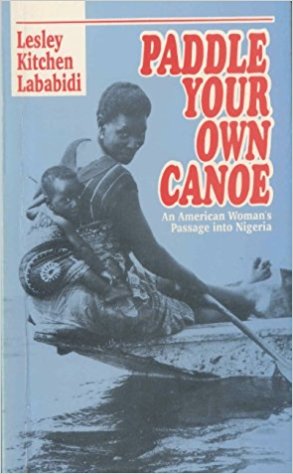
 experienced writing for what was once the premier publishing firm in Nigeria. Spectrum Books published your Nigeria memoirs, Paddle Your Own Canoe: An American Woman's Passage into Nigeria. How do your experiences with the two publishing houses compare and contrast?
Are there pearls of publishing wisdom gleaned from outgoing Associate Editor, the phenomenal Neil Hewison which you would like to pass on to emerging publishers in Nigeria?
experienced writing for what was once the premier publishing firm in Nigeria. Spectrum Books published your Nigeria memoirs, Paddle Your Own Canoe: An American Woman's Passage into Nigeria. How do your experiences with the two publishing houses compare and contrast?
Are there pearls of publishing wisdom gleaned from outgoing Associate Editor, the phenomenal Neil Hewison which you would like to pass on to emerging publishers in Nigeria? 











